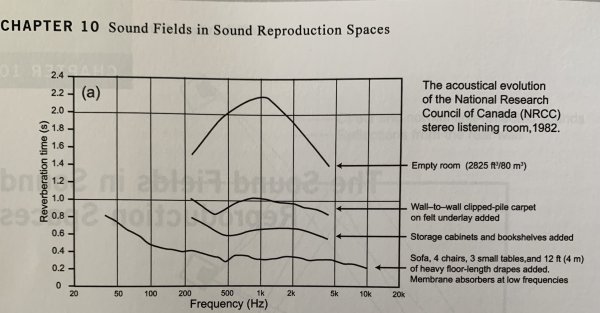I do not want to turn this into an acoustics topic as I think forum has a specific place for that but still I would like to add some things.
@
ddk
David, I have in one of my books, the measurements made with the same rooms with and without furniture and its measurable effects. It actually had a few scenarios with couches etc. I will find it and attach it here later on. You are right, furniture does make absorption but unpredictably. You can not design around it but you can design after it. You can measure a room with existing furniture and then proceed with whatever is needed. You should never design without accounting for what goes in the room anyway.
@
howiebrou
If you want to hear what has been recorded at the concert hall, then just like your equipment, you need your room to get out of the way. The idea is to have a transparent room and listen to the recordings. This does not mean over or underdamped. If your room is lively, that is your rooms character, if it is significant, they that signature will be on all recordings.
There are two things you can not achieve with just furniture or placement. One is linear bass response in a room below its schroeder frequency. The other is linear decay throughout the audio band. If you want to hear a concert halls ambience in the recording, your room should have a linear decay response so that it can translate the decay characteristic of that specific hall. Please do not mix performance space with reproduction space, they need different approaches as they are for different things.








